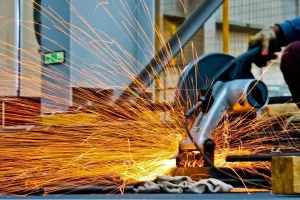In the realm of fabrication, inefficiencies have long plagued production timelines, costs, and product quality. The integration of technology-driven solutions is revolutionizing this landscape. Embracing cutting-edge fabrication processes enables businesses to reduce production times, minimize errors, and enhance overall efficiency. Exploring the synergy between technology and fabrication reveals that traditional methods are no longer the sole path forward.
Key Takeaways
- Inefficient fabrication processes result in time, resource, and revenue losses, decreased productivity, and increased costs, impacting the environment and employee morale.
- Leveraging technology improves fabrication process efficiency, reduces production timelines and costs, and boosts product quality and automation integration.
- Automation enhances precision and accuracy, reduces labor costs and human error, and boosts production capacity and scalability while improving data collection and analysis.
- Data-driven insights uncover hidden opportunities, pinpoint areas of inefficiency, and implement targeted improvements, increasing productivity and reducing waste.
- Digital twin technology replicates real-world processes, simulates and refines methods, reduces prototyping costs and waste, and optimizes production workflows and resources, improving product quality and defect rates.
Inefficient Fabrication Processes: A Reality
In many manufacturing sectors, inefficient fabrication processes have become an unfortunate reality, leading to significant losses regarding time, resources, and ultimately, revenue. This results in decreased productivity, reduced quality, and increased costs. The consequences of inefficient fabrication process efficiency are far-reaching, affecting not only the bottom line but additionally, the environment and employee morale.
Streamlining Fabrication Through Automation
By integrating automation into fabrication processes, manufacturers can significantly improve Fabrication Process Efficiency, reducing production timelines and costs while boosting overall product quality. Automation facilitates:
- Increased precision and accuracy in production
- Reduced labor costs and minimized human error
- Improved production capacity and scalability
- Improved data collection and analysis for process optimization
Data-Driven Insights for Process Optimization
Through harnessing the potential of data-driven insights, manufacturers can uncover hidden opportunities for process optimization, thereby further improving Fabrication Process needs. By analyzing production data, manufacturers can pinpoint areas of inefficiency and implement targeted improvements, leading to increased productivity and reduced waste. This data-driven approach empowers manufacturers to refine their processes, ultimately resulting in elevated Fabrication Process needs.
Revolutionizing Fabrication With Digital Twin Technology
By replicating real-world fabrication processes in a virtual environment, digital twin technology empowers manufacturers to simulate, test, and refine their methods, thereby unlocking new avenues for improving Fabrication Process Efficiency.
- Reduced prototyping costs and minimized waste
- Optimized production workflows and resource allocation
- Improved product quality and reduced defect rates
- Advanced collaboration and knowledge sharing across teams

Frequently Asked Questions
How Do Tech-Driven Fabrication Processes Improve Fabrication Process Efficiency?
Tech-driven fabrication processes improve fabrication process efficiency by streamlining production workflows, minimizing manual errors, and optimizing resource allocation, resulting in reduced lead times, increased productivity, and improved product quality.
What Are the Most Common Inefficiencies in Traditional Fabrication Processes?
In traditional fabrication processes, typical inefficiencies include manual data entry errors, insufficient supply chain management, and ineffective production workflows, leading to wasted resources, prolonged lead times, and diminished product quality.
Can Automation Fully Replace Human Labor in Fabrication Processes?
While automation can greatly enhance fabrication processes, fully replacing human labor is unlikely, as certain tasks require subtle decision-making, creativity, and adaptability, making human oversight crucial for the ideal fabrication process need.
How Do Data Analytics Enhance Fabrication Process Efficiency in Real-Time?
Real-time data analytics improves fabrication process efficiency by providing instantaneous insights into production workflows, enabling swift identification and correction of bottlenecks, and optimizing resource allocation to maximize output and minimize waste.
What Is the Role of Digital Twin Technology in Optimizing Fabrication Workflows?
Digital twin technology optimizes manufacturing workflows by simulating real-world processes, enabling predictive maintenance, reducing mistakes, and streamlining production, thereby increasing efficiency and reducing costs in manufacturing processes.
Conclusion
The implementation of technology-driven solutions in fabrication processes has led to a fundamental shift in efficiency, productivity, and quality. By utilizing automation, data-driven insights, and digital twin technology, businesses can optimize their processes, reduce errors, and improve product quality. This innovative approach has reshaped the fabrication terrain, enabling companies to uncover hidden opportunities, boost productivity, and stay ahead in the competitive market. As the industry continues to evolve, the adoption of tech-driven fabrication processes is poised to become the new standard.
You May Also Like:





